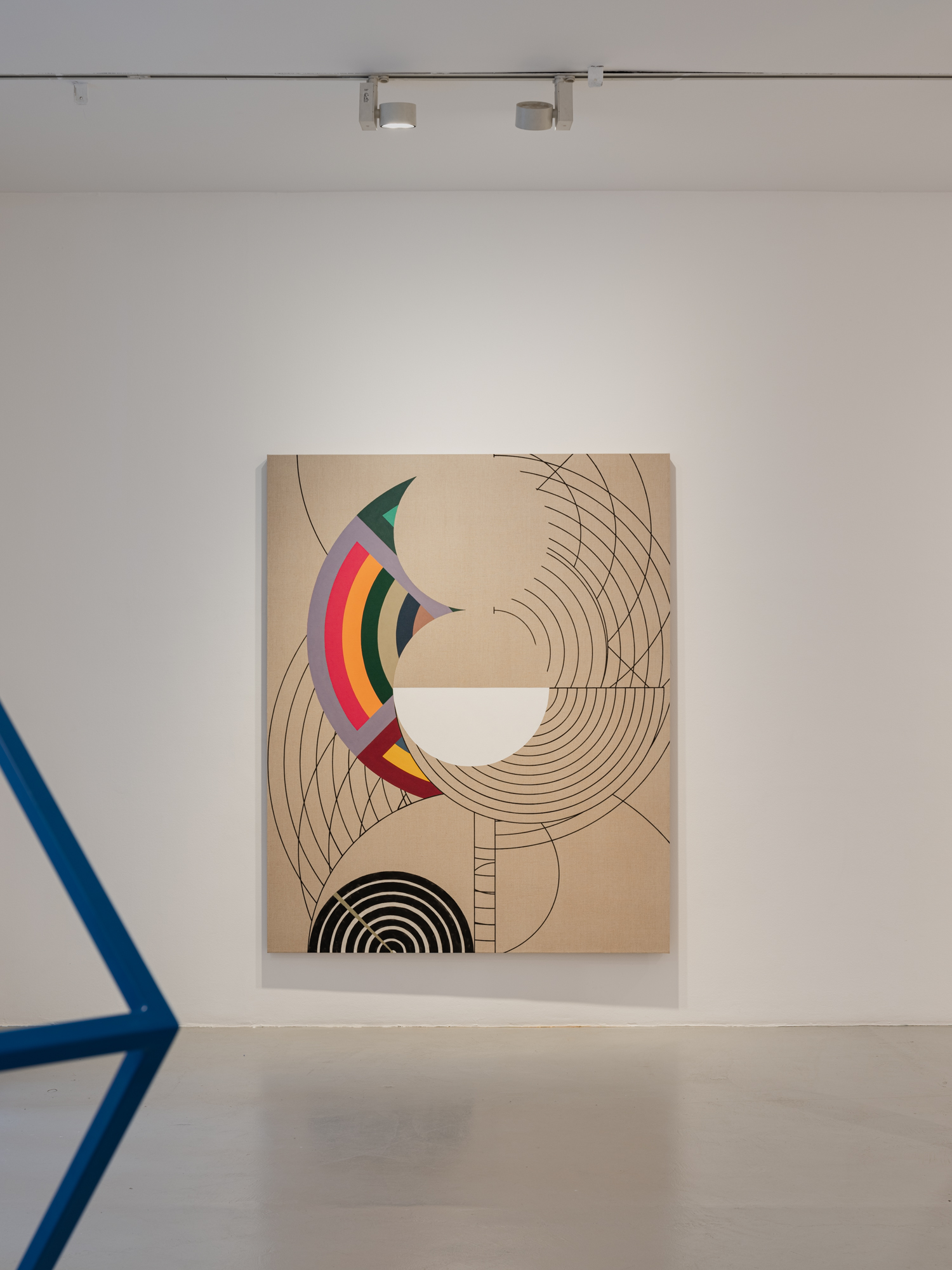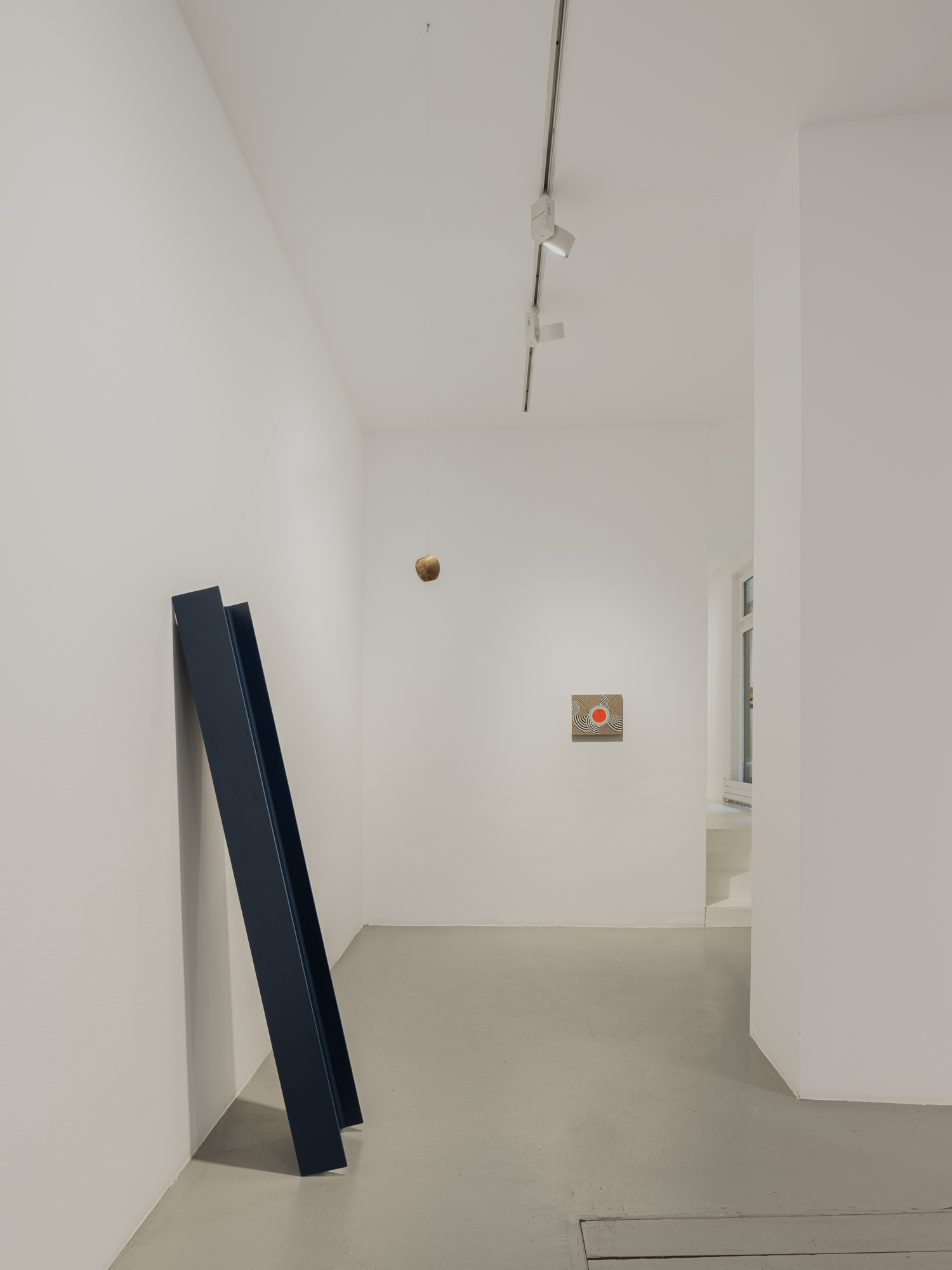- text
- pictures
- Jose Dávila
His work not only resides in aestheticizing a utensil or material, the objects he places as sculptures are rather, following George Perec, species of spaces: packages? containers? auxiliary objects? envelopes? I don’t really know how to name them, I place these categories as a question because they could be all that for me and still remain undefined. Just like words, which will never end up usurping the thing.
Speaking in terms of language, his works remain not only physically, but semantically suspended. From the beginning, Dávila’s pieces are assembled and disassembled, they exist as works, as phrases, as long as they are exhibited and suspended, they return to their condition of multiple and usable objects, once they are “disarticulated” and remain there waiting, as loose words, waiting to be used again to create new and surprising phrases. Language games are present in the trajectory of the artist from Guadalajara since his very early production. Although in the minimalist way we could speak of an honest will in the use of materials, suddenly, as in the work of the Belgian surrealist René Magritte, the stones, the apples, the balloons, the threads that go from one object to another take on multiple other meanings.
Patricia Martín, curator.
Jose Dávila is interested in space and mass, in mathematical laws and physical phenomena. Thus, his oeuvre characteristically plays with gravity and apparent weightlessness, with statics and dynamics, forces of tension and compression, and those precarious moments before something collapses. With his incorporation of natural and industrially manufactured materials, he creates poetic works that are sensorially captivating and structurally articulated. His outstanding 2022 solo exhibition Memory of a Telluric Movement at Museum Haus Konstruktiv in Zurich was perceived, in connection with the current global situation, as a reminder that any (telluric) movement, no matter how slight, can cause a static well balanced structure to collapse and our lives to be thrown off track by sociopolitical, ecological or economic developments.
Sabine Schaschl, Director of Museum Haus Konstruktiv, Zurich.
I remember on a certain occasion, perhaps fifteen or twenty years ago, Jose Dávila enthusiastically lent me Georges Perec’s book “Species of Spaces”, which I was unaware of at the time and which would have arisen in the middle of a heated discussion. The book and its reflection on space and the elements that make it up, described with Perec’s typical precision and structure, resonate with me today with the same intensity. I take from page 130 (in its Spanish version) the following fragment, hoping it refers in some mysterious sense to my friend’s work:
Play with space:
Cause an eclipse of the sun by raising your little finger (as. Leopold Bloom does in Ulysses). Have yourself photographed holding up the Leaning Tower of Pisa.
Georges Perec. Species of Spaces, 1974
Jorge Méndez Blake, artist.

Anastasia Bengochea (Monstruo Espagueti), cartoonist.
Material and association amount to the same thing and a sculpture by Dávila is a sometimes calm, sometimes contradictory, mass of implication.
The very early piece, which filled a space with brimming presence, suffocated to deny an overview while, later, the nonexistent walls of a studio in an English field, were held together by pure illusion.
Unwittingly, even unwillingly, with perception arriving perhaps before we see, the mind, eye, and sometimes body, will crawl across a surface to find out. Shiny, lumpy, artisanal, reconvened, given, found, natural, heavy as well as light; one to one and one by one, in varying combinations of experience and scale, the sometime-precarious piece, ‘all tied up with no-where to go’, is able to suggest more than itself and point to the fact that the subject, and therefore object, is out there ahead of us still.
Sacha Craddock, Curator and Art Critic

















